Abstract
1. Human subjects attempted to maintain a constant force by flexing their elbow against a spring which was attached to a force transducer at one end and the subject's wrist at the other. The tremor at 8-12 Hz which develops in this situation was enhanced in amplitude with negligible change of frequency by applying vibration at 100 Hz to the tendon either of an agonist muscle (biceps brachii) or of the antagonist (triceps brachii). The tremor was assessed by spectral analysis of the force records and measurement of the peaks in the spectra. The compliance of the spring was normally 2.8 N/mm and target forces of 40-120 N were used. 2. The percentage increase in the tremor on applying vibration was relatively independent of target force, although the absolute amounts of tremor increased markedly with increasing target force. The average increase was greater for vibration of triceps than for biceps (70% as opposed to 37%, averaged between subjects and over a range of forces). 3. When the spring was replaced by a rigid connexion there was usually no clear tremor peak either in the presence or absence of vibration. Vibration, however, tended to increase the general noisiness of the force signal. 4. Qualitatively similar effects were seen when the elbow exerted an extending force so that triceps became the agonist and biceps the antagonist. 5. The tremor peak present in the spectrum of the demodulated electromyogram during vigorous tremor increased in size when vibration made the tremor larger. 6. The effect of a rhythmic afferent input was studied by modulating the amplitude of the vibration at 8-9 Hz, to correspond to the tremor frequency, while the subject pulled against a rigid attachment. Both the e.m.g. and the tension spectra contained peaks at the modulation frequency. The raw force records showed that, with reference to the modulation, the effects of biceps and of triceps vibration were approximately 180 degrees out of phase with each other, as would occur if vibration of one were having an excitatory action, and vibration of the other an inhibitory action. Moreover, in each case the effect on force (whether excitatory or inhibitory) lagged about half a cycle on the vibration envelope, as required for such reflexes to help in the generation of tremor. 7. It is suggested that vibration increases the modulation of Ia firing elicited by a given movement tremor and this, by means of the stretch reflex arc, enhanced the tremor. The powerful action of vibration of the antagonist illustrates, it would seem, the functional effectiveness under normal conditions of a spinal inhibitory pathway, most probably the Ia disynaptic route. The findings are also discussed in relation to the increase in stretch reflex gain that occurs in association with increasing strength of voluntary contraction.
Full text
PDF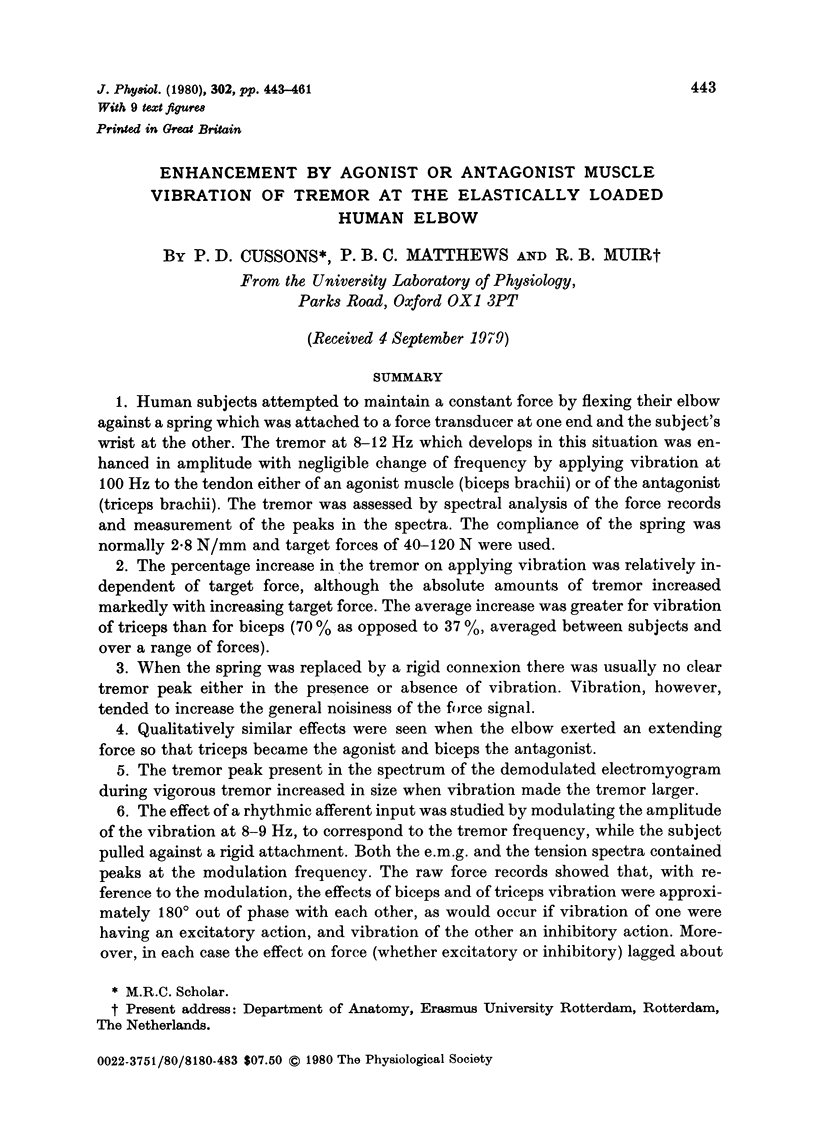
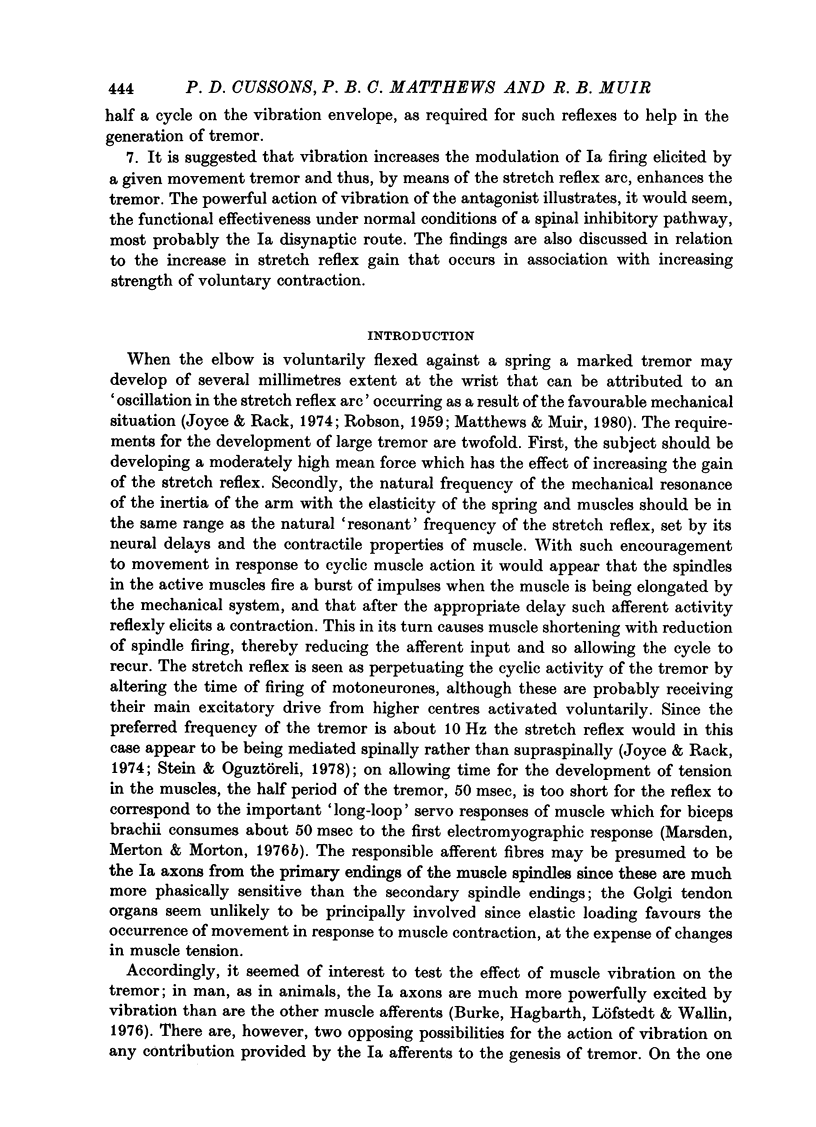
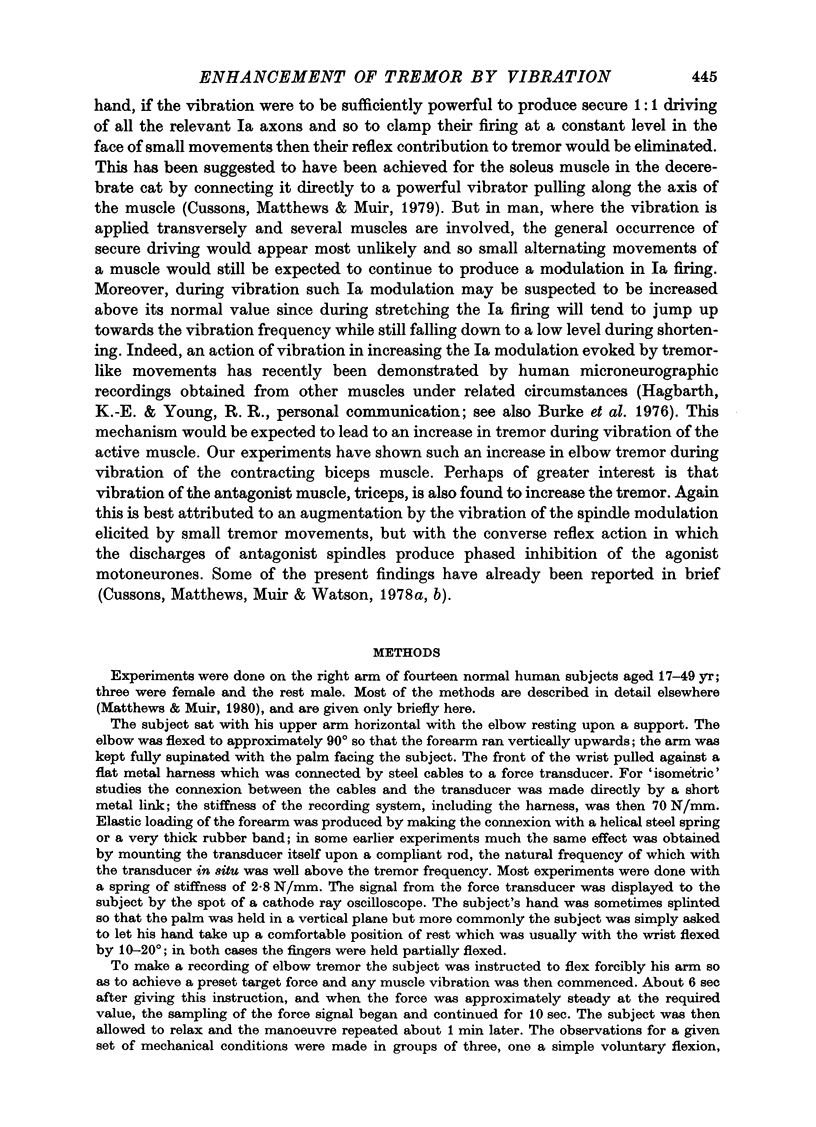
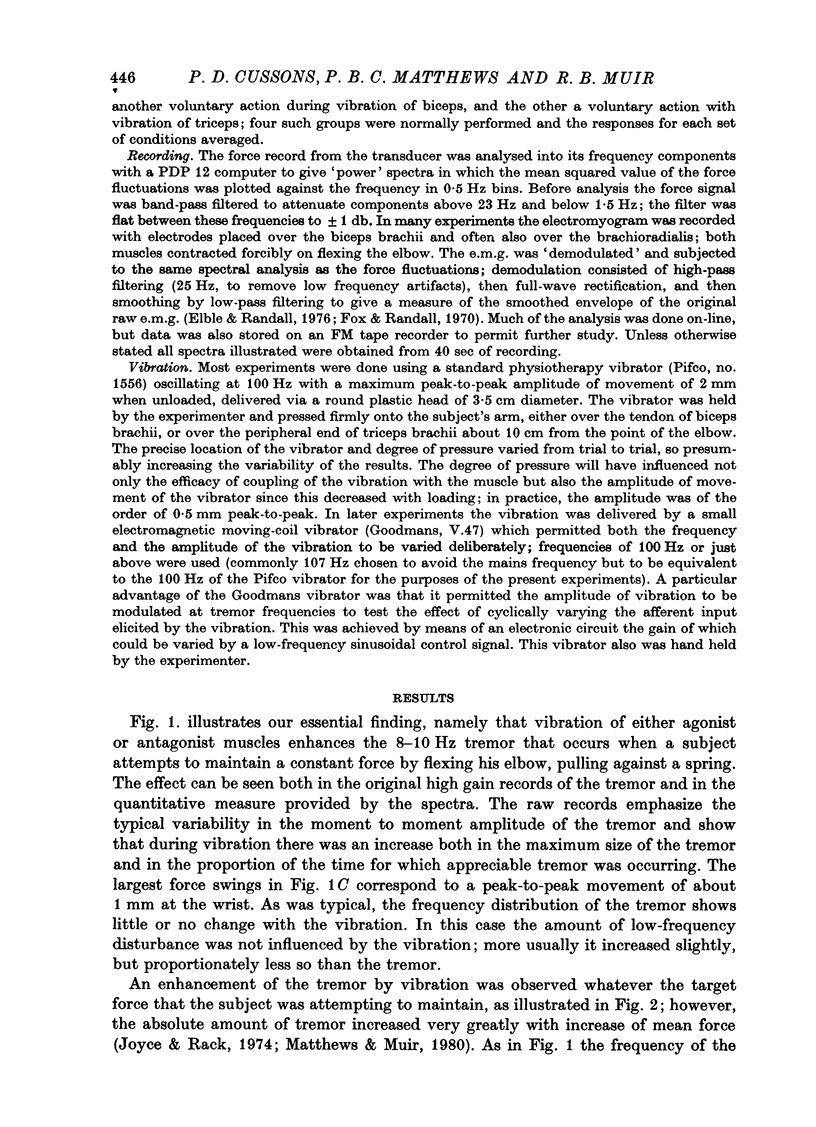
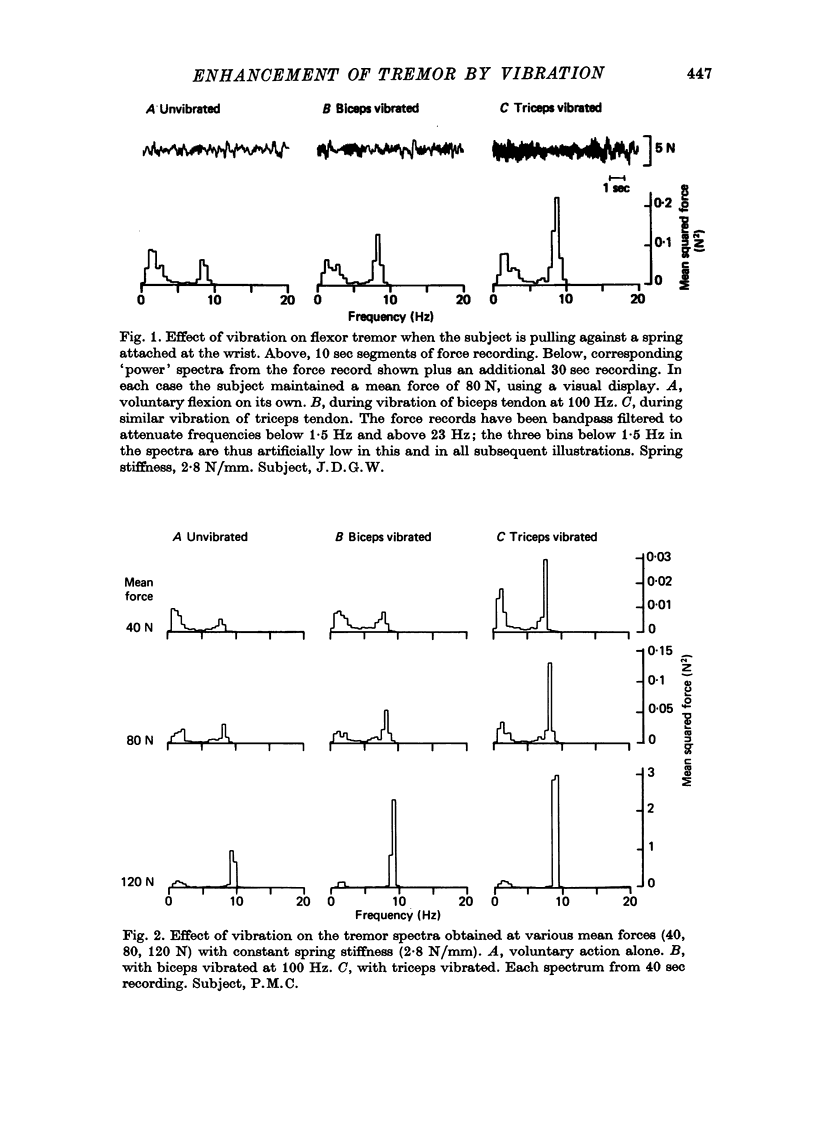
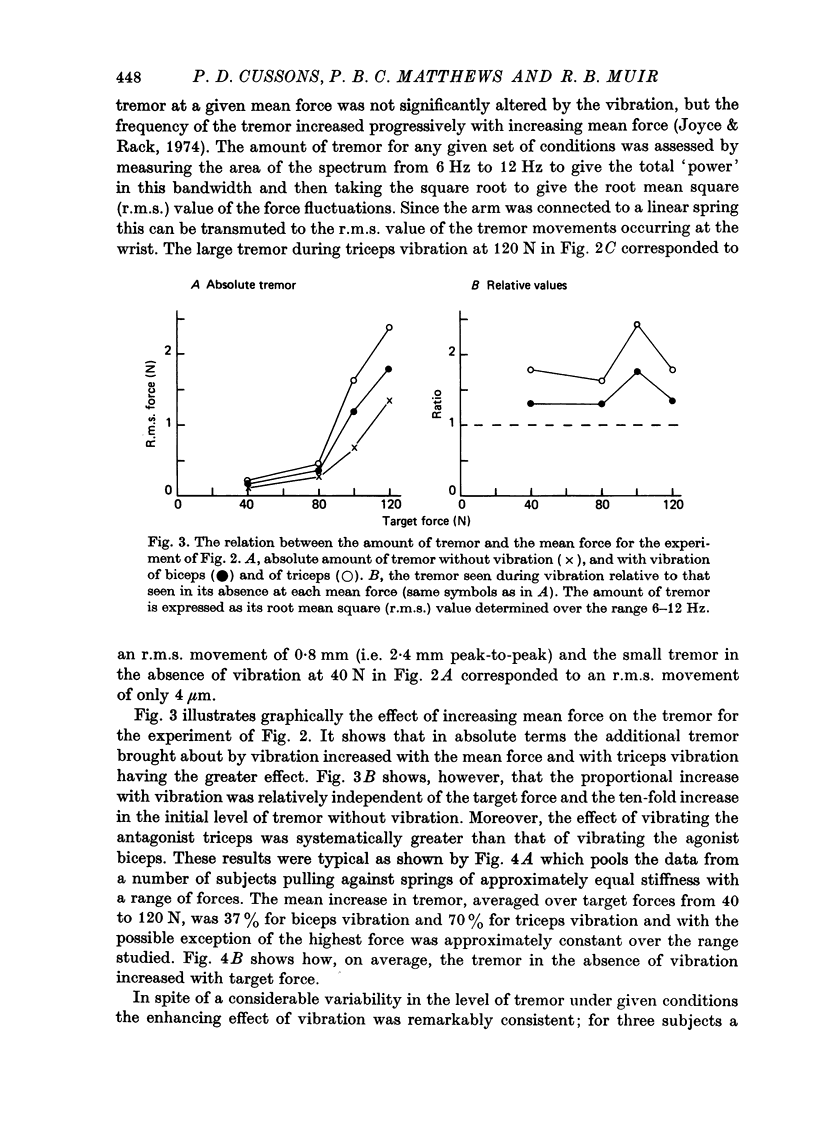
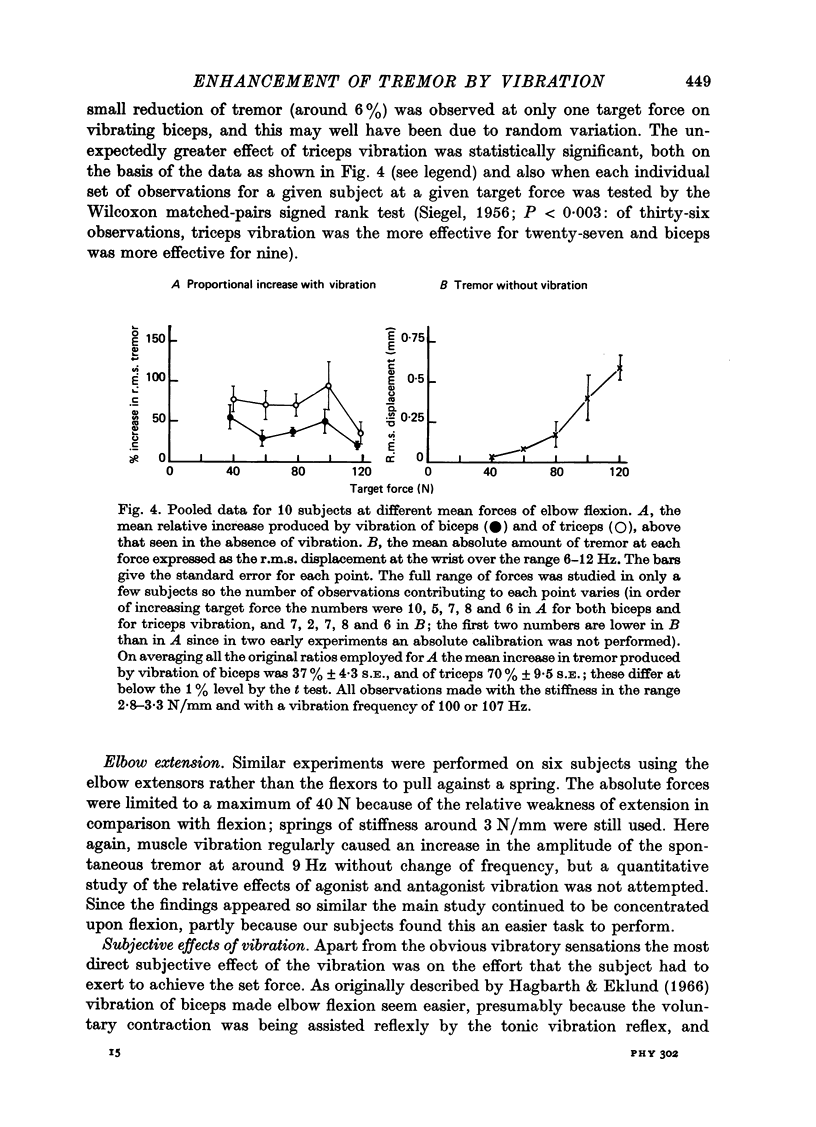
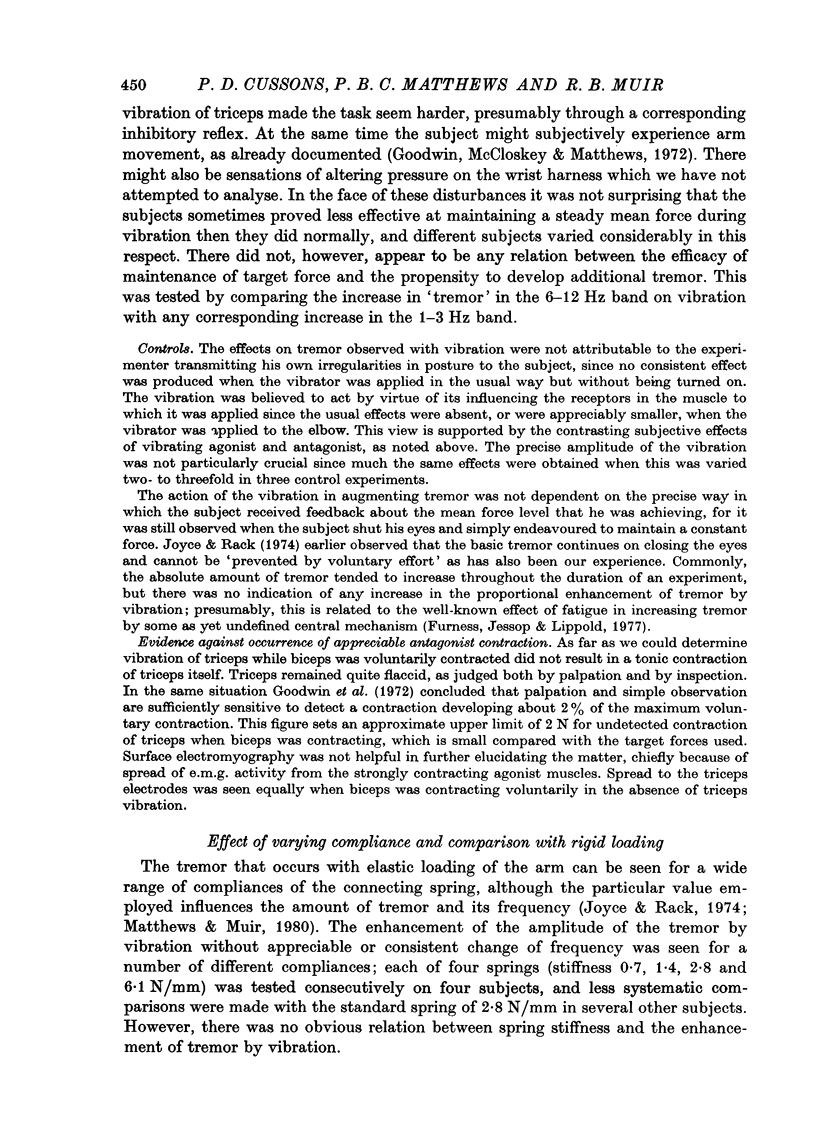
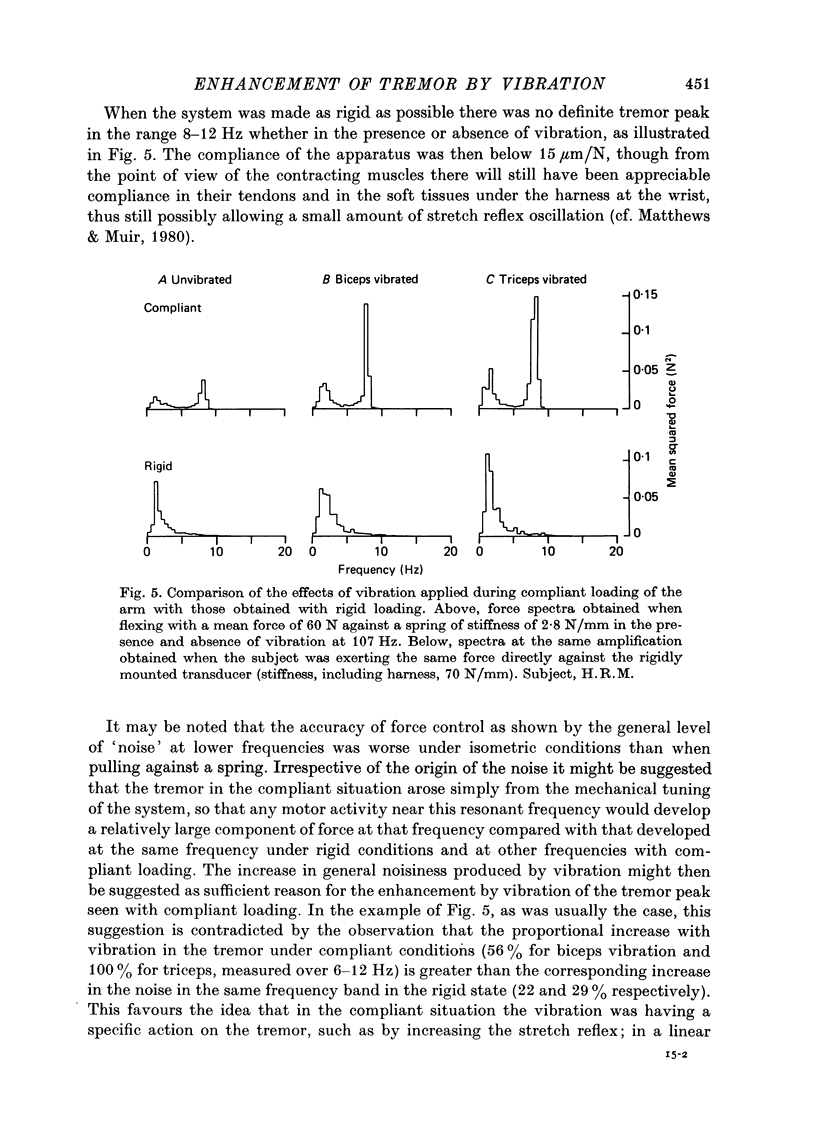
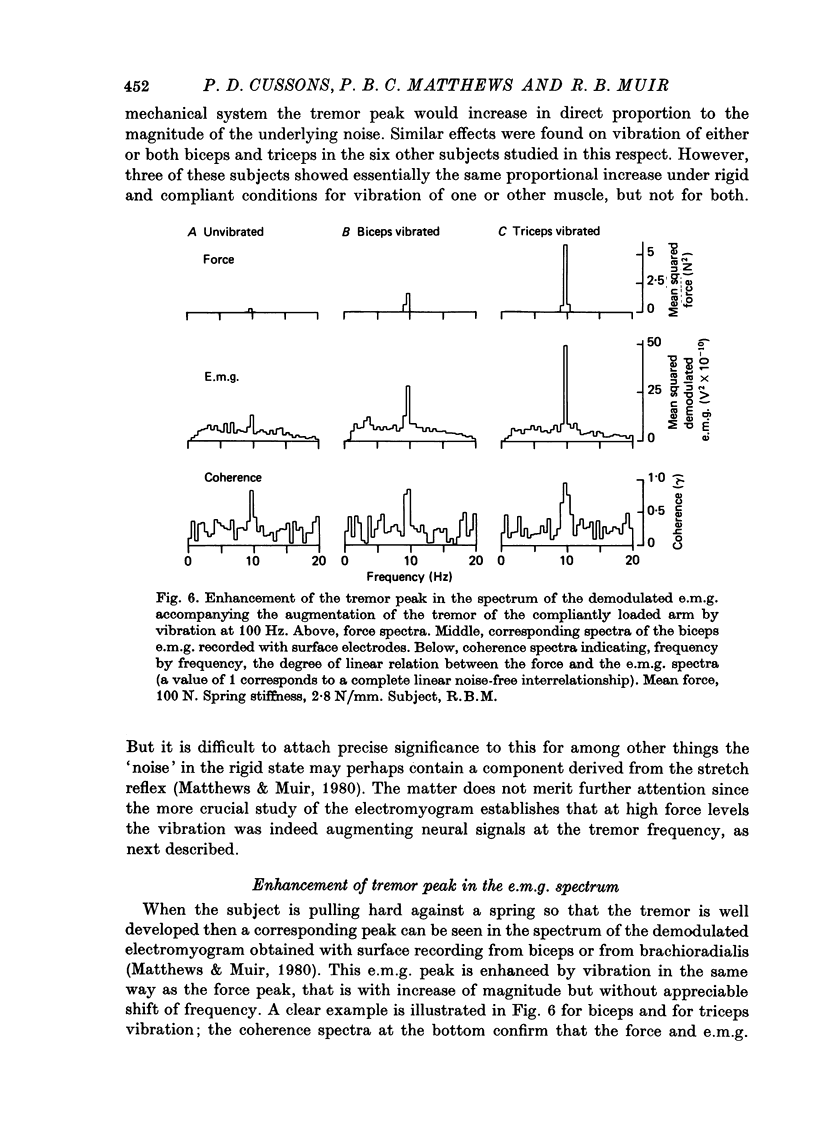
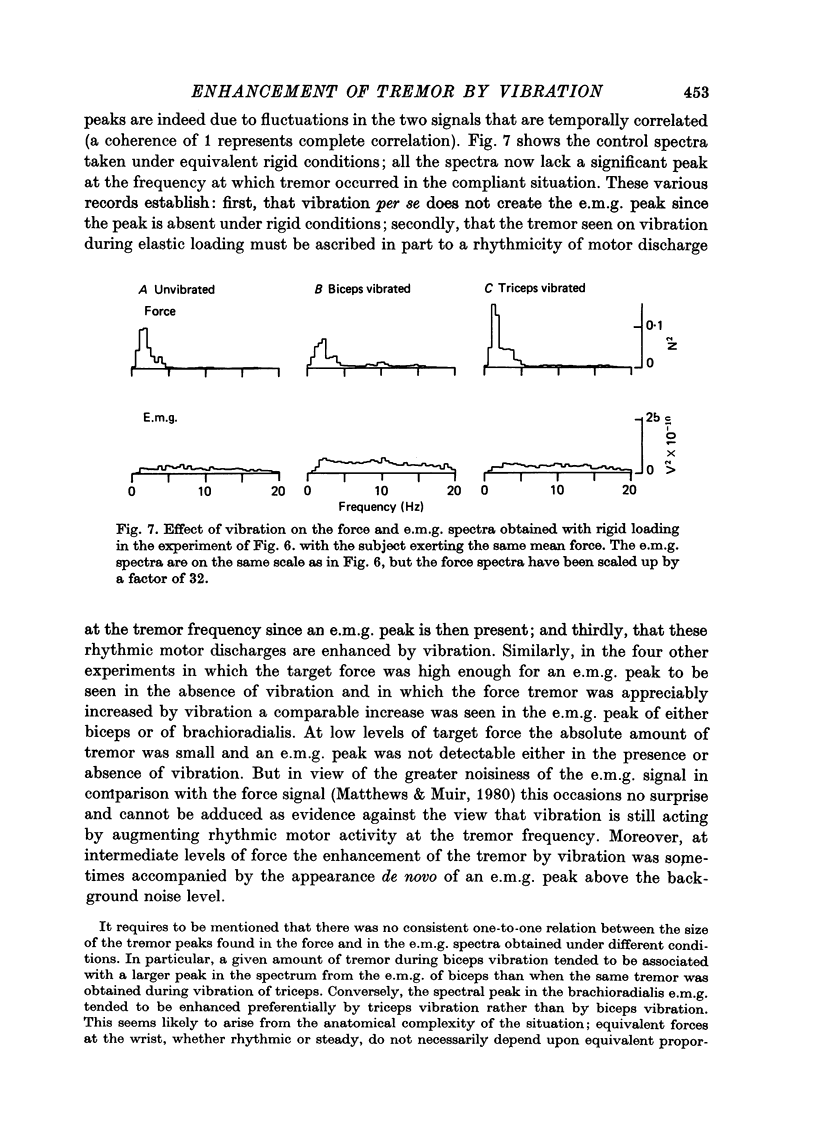
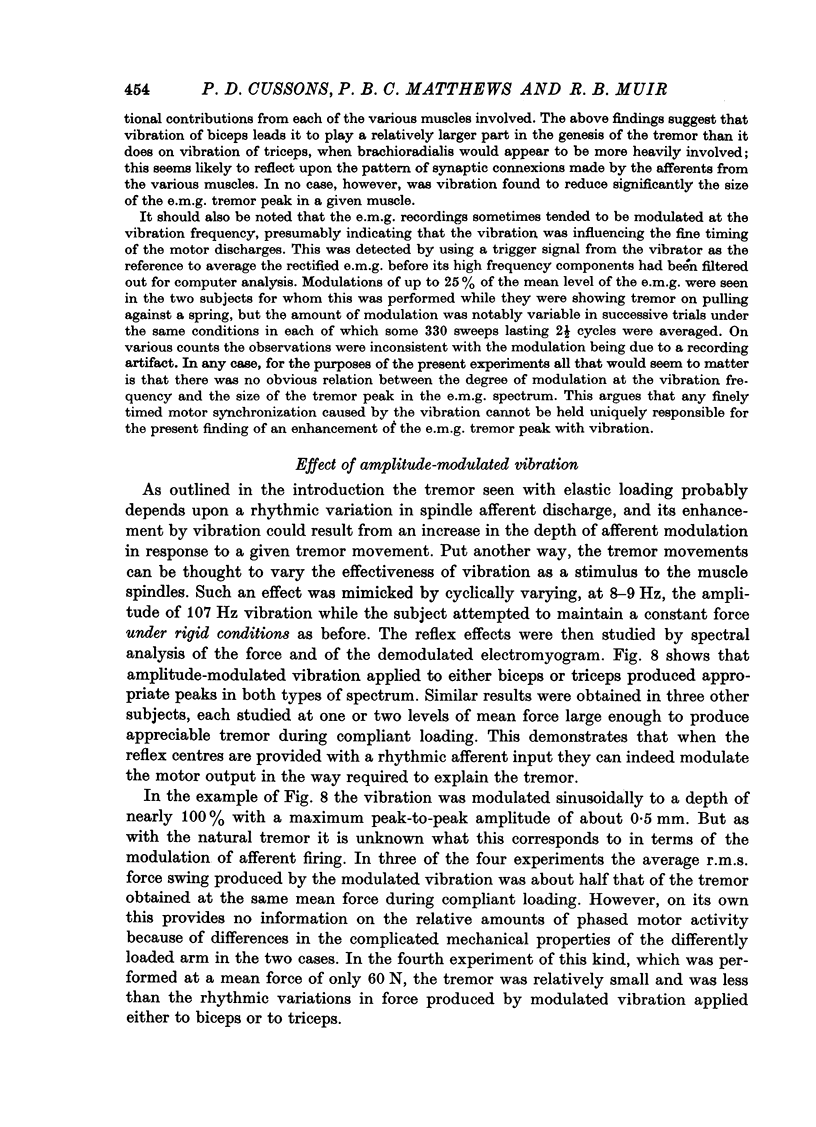
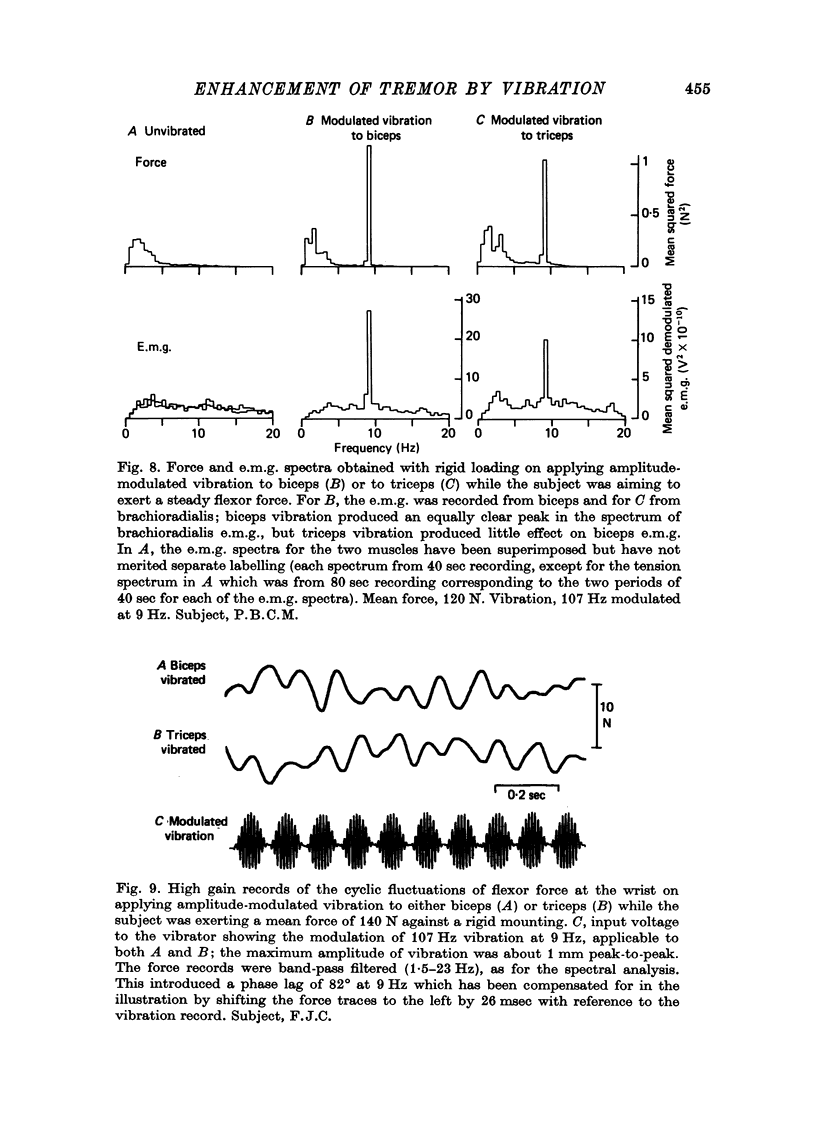
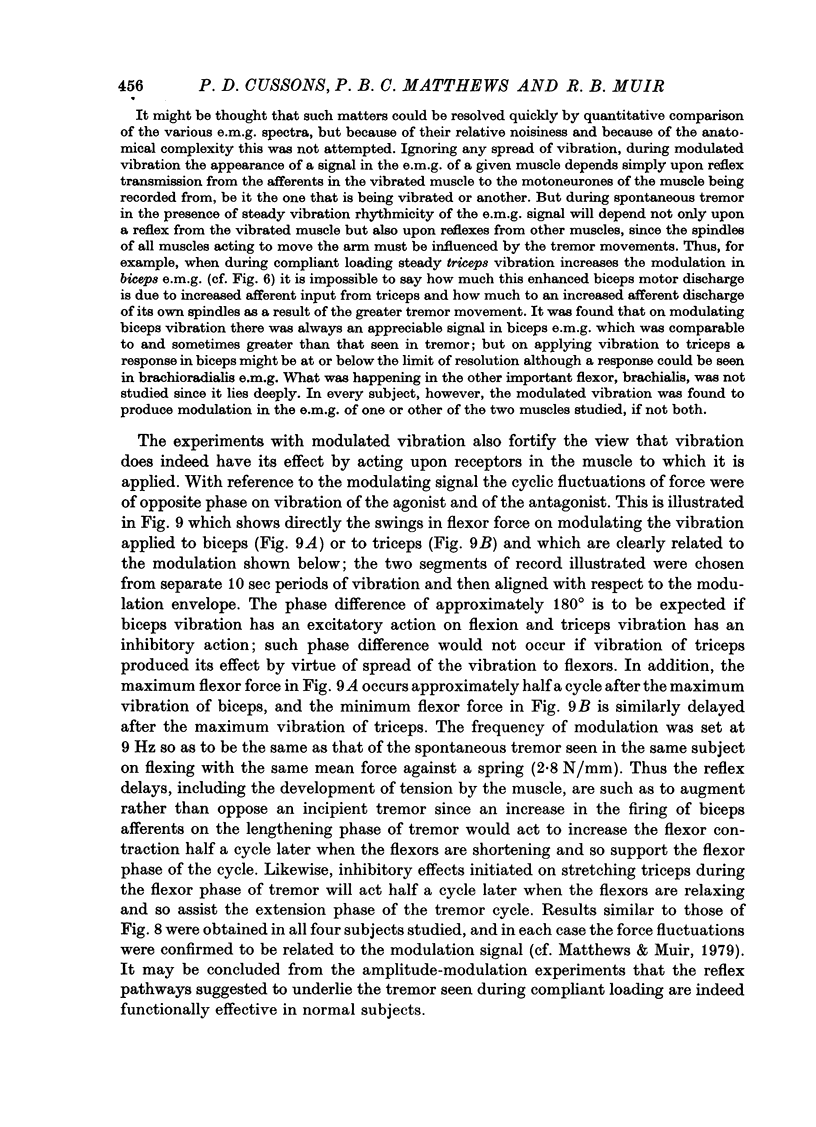
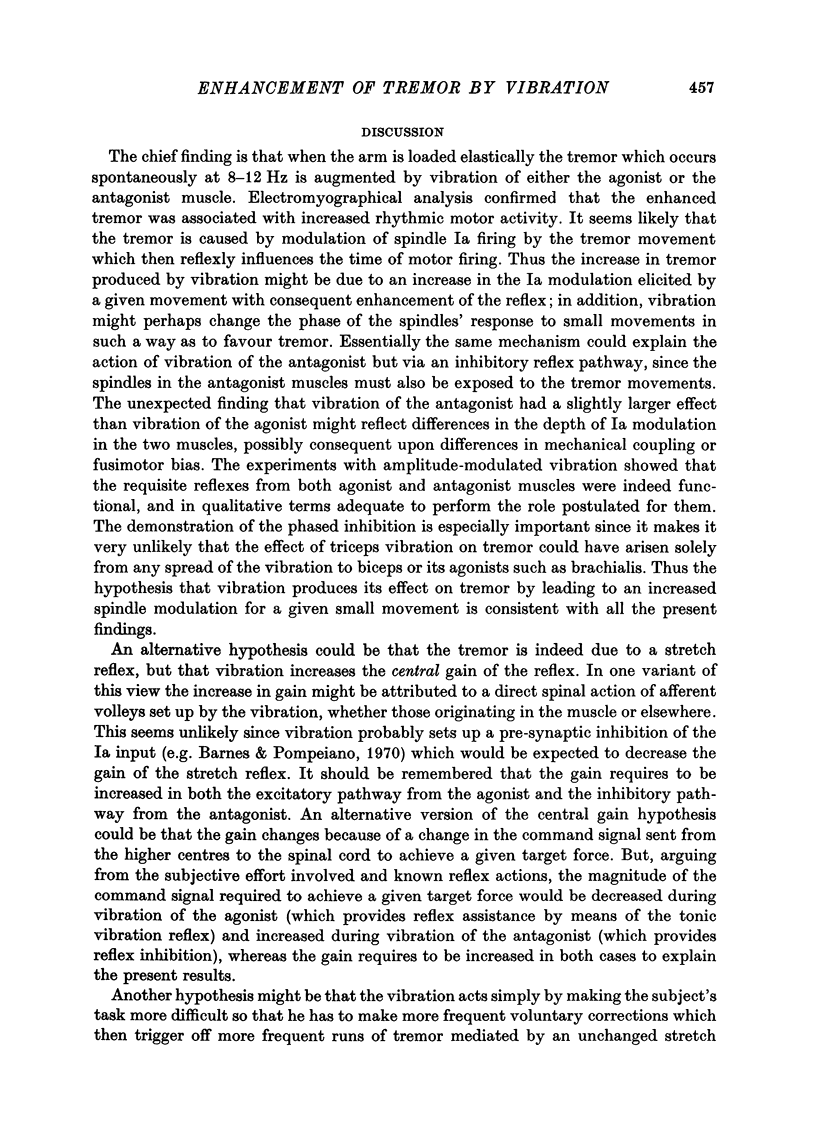
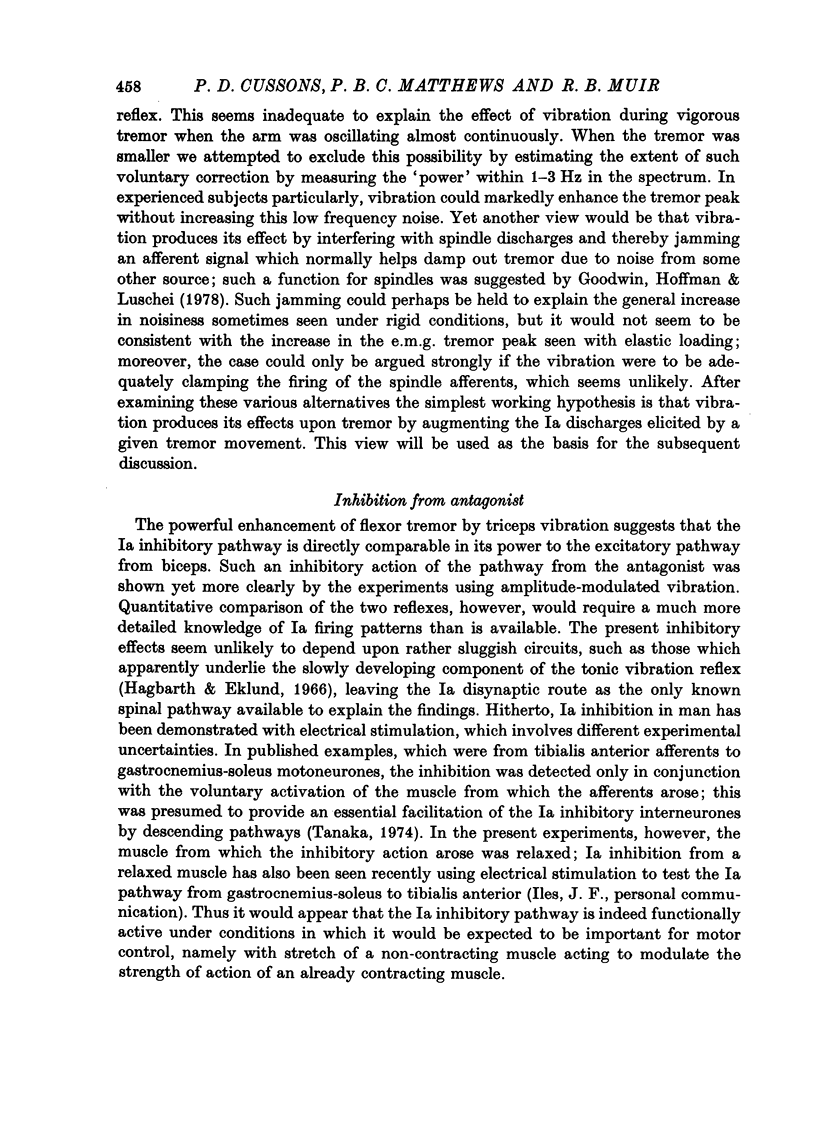
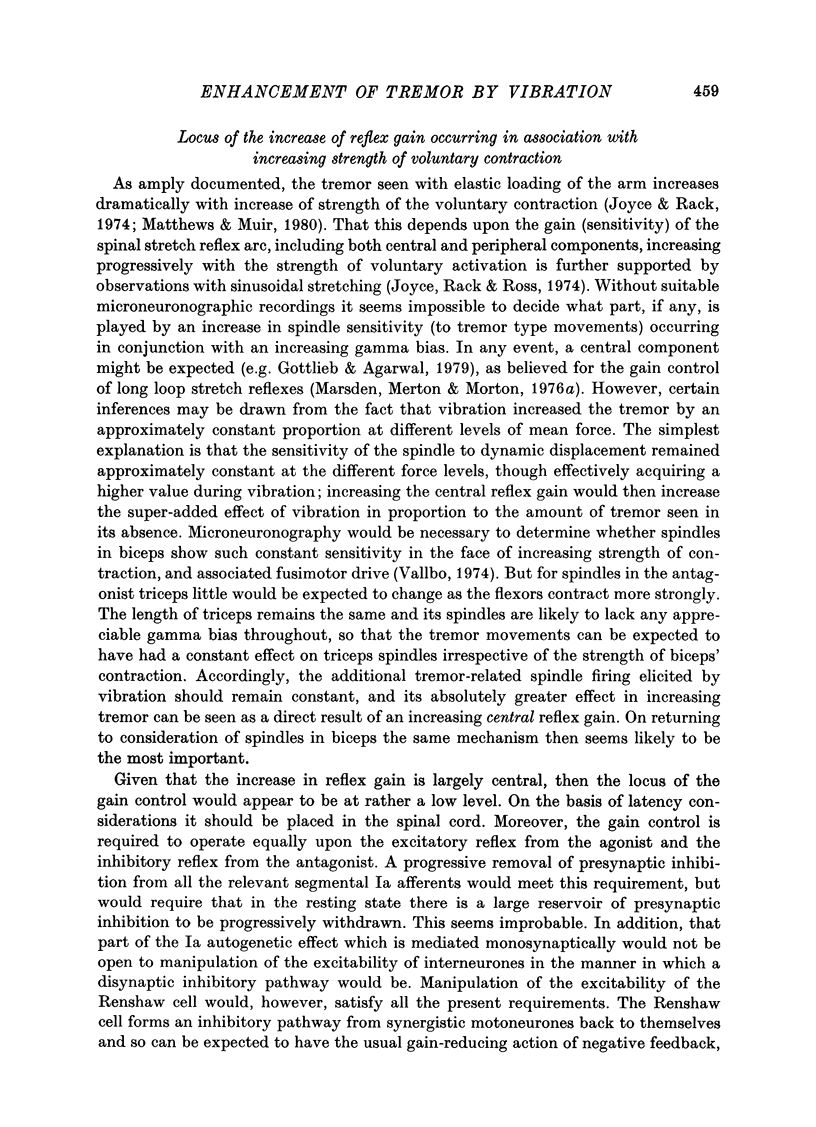
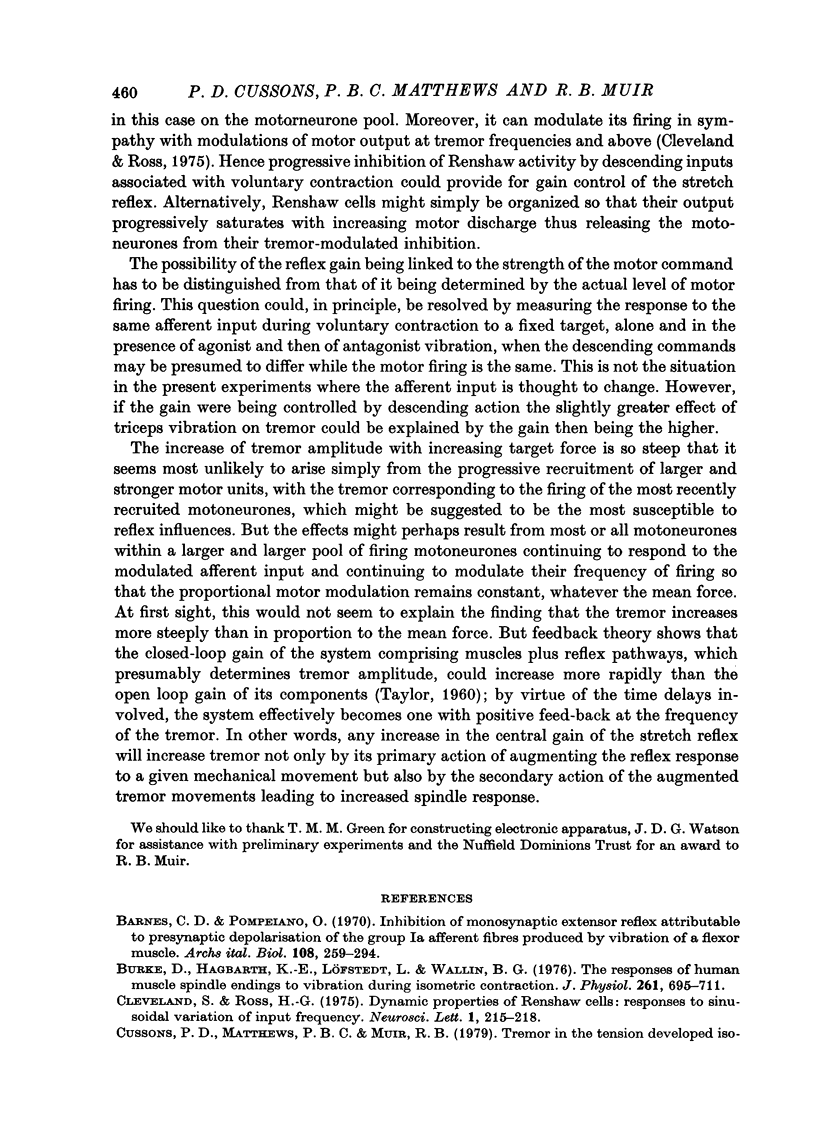
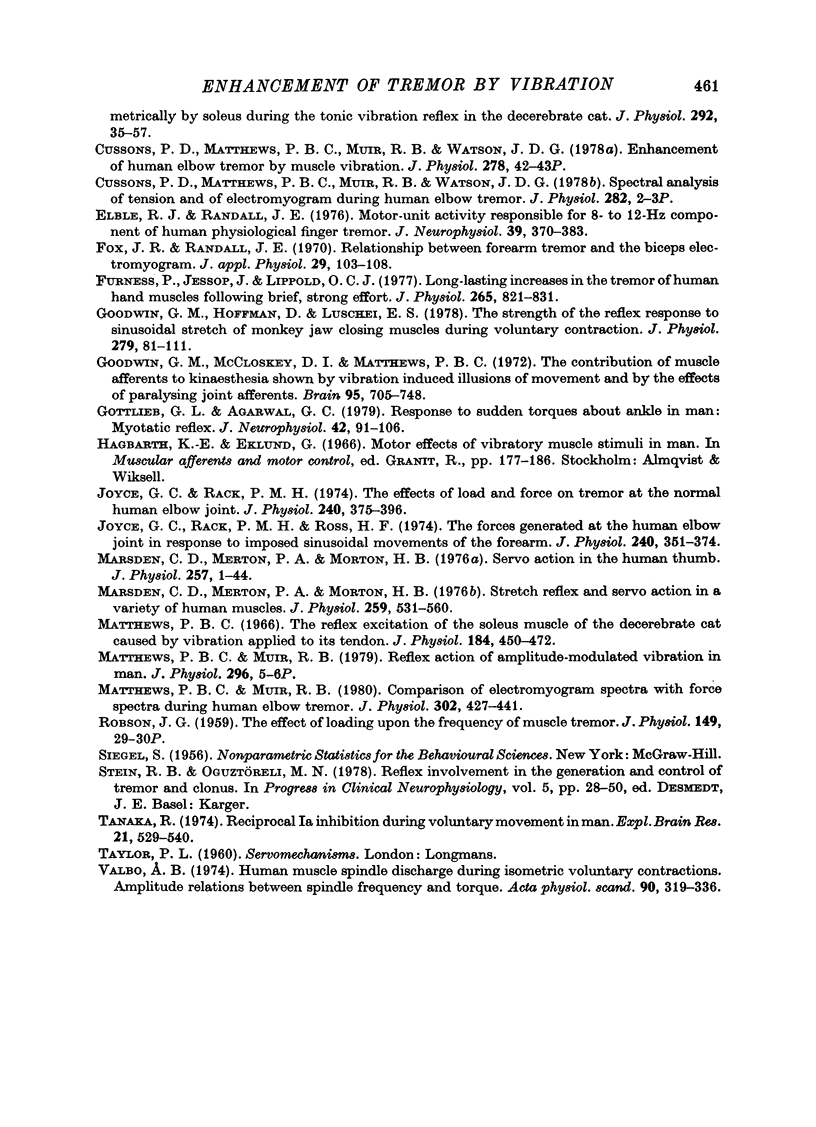
Selected References
These references are in PubMed. This may not be the complete list of references from this article.
- Burke D., Hagbarth K. E., Löfstedt L., Wallin B. G. The responses of human muscle spindle endings to vibration during isometric contraction. J Physiol. 1976 Oct;261(3):695–711. doi: 10.1113/jphysiol.1976.sp011581. [DOI] [PMC free article] [PubMed] [Google Scholar]
- Cussons P. D., Matthews P. B., Muir R. B. Tremor in the tension developed isometrically by soleus during the tonic vibration reflex in the decerebrate cat. J Physiol. 1979 Jul;292:35–57. doi: 10.1113/jphysiol.1979.sp012837. [DOI] [PMC free article] [PubMed] [Google Scholar]
- Cussons P. D., Matthews P. B., Muir R. B., Watson J. D. Enhancement of human elbow tremor by muscle vibration [proceedings]. J Physiol. 1978 May;278:42P–43P. [PubMed] [Google Scholar]
- Cussons P. D., Matthews P. B., Muir R. B., Watson J. D. Spectral analysis of tension and of electromyogram during human elbow tremor [proceedings]. J Physiol. 1978 Sep;282:2P–3P. [PubMed] [Google Scholar]
- Elble R. J., Randall J. E. Motor-unit activity responsible for 8- to 12-Hz component of human physiological finger tremor. J Neurophysiol. 1976 Mar;39(2):370–383. doi: 10.1152/jn.1976.39.2.370. [DOI] [PubMed] [Google Scholar]
- Fox J. R., Randall J. E. Relationship between forearm tremor and the biceps electromyogram. J Appl Physiol. 1970 Jul;29(1):103–108. doi: 10.1152/jappl.1970.29.1.103. [DOI] [PubMed] [Google Scholar]
- Furness P., Jessop J., Lippold O. C. Long-lasting increases in the tremor of human hand muscles following brief, strong effort. J Physiol. 1977 Mar;265(3):821–831. doi: 10.1113/jphysiol.1977.sp011746. [DOI] [PMC free article] [PubMed] [Google Scholar]
- Goodwin G. M., Hoffman D., Luschei E. S. The strength of the reflex response to sinusoidal stretch of monkey jaw closing muscles during voluntary contraction. J Physiol. 1978 Jun;279:81–111. doi: 10.1113/jphysiol.1978.sp012332. [DOI] [PMC free article] [PubMed] [Google Scholar]
- Goodwin G. M., McCloskey D. I., Matthews P. B. The contribution of muscle afferents to kinaesthesia shown by vibration induced illusions of movement and by the effects of paralysing joint afferents. Brain. 1972;95(4):705–748. doi: 10.1093/brain/95.4.705. [DOI] [PubMed] [Google Scholar]
- Gottlieb G. L., Agarwal G. C. Response to sudden torques about ankle in man: myotatic reflex. J Neurophysiol. 1979 Jan;42(1 Pt 1):91–106. doi: 10.1152/jn.1979.42.1.91. [DOI] [PubMed] [Google Scholar]
- Joyce G. C., Rack P. M., Ross H. F. The forces generated at the human elbow joint in response to imposed sinusoidal movements of the forearm. J Physiol. 1974 Jul;240(2):351–374. doi: 10.1113/jphysiol.1974.sp010614. [DOI] [PMC free article] [PubMed] [Google Scholar]
- Joyce G. C., Rack P. M. The effects of load and force on tremor at the normal human elbow joint. J Physiol. 1974 Jul;240(2):375–396. doi: 10.1113/jphysiol.1974.sp010615. [DOI] [PMC free article] [PubMed] [Google Scholar]
- Marsden C. D., Merton P. A., Morton H. B. Servo action in the human thumb. J Physiol. 1976 May;257(1):1–44. doi: 10.1113/jphysiol.1976.sp011354. [DOI] [PMC free article] [PubMed] [Google Scholar]
- Marsden C. D., Merton P. A., Morton H. B. Stretch reflex and servo action in a variety of human muscles. J Physiol. 1976 Jul;259(2):531–560. doi: 10.1113/jphysiol.1976.sp011481. [DOI] [PMC free article] [PubMed] [Google Scholar]
- Matthews P. B., Muir R. B. Comparison of electromyogram spectra with force spectra during human elbow tremor. J Physiol. 1980 May;302:427–441. doi: 10.1113/jphysiol.1980.sp013254. [DOI] [PMC free article] [PubMed] [Google Scholar]
- Matthews P. B., Muir R. B. Reflex action of amplitude-modulated vibration in man [proceedings]. J Physiol. 1979 Nov;296:5P–6P. [PubMed] [Google Scholar]
- Matthews P. B. The reflex excitation of the soleus muscle of the decerebrate cat caused by vibbration applied to its tendon. J Physiol. 1966 May;184(2):450–472. doi: 10.1113/jphysiol.1966.sp007926. [DOI] [PMC free article] [PubMed] [Google Scholar]
- Tanaka R. Reciprocal Ia inhibition during voluntary movements in man. Exp Brain Res. 1974;21(5):529–540. doi: 10.1007/BF00237171. [DOI] [PubMed] [Google Scholar]
- Vallbo A. B. Human muscle spindle discharge during isometric voluntary contractions. Amplitude relations between spindle frequency and torque. Acta Physiol Scand. 1974 Feb;90(2):319–336. doi: 10.1111/j.1748-1716.1974.tb05594.x. [DOI] [PubMed] [Google Scholar]


